Have you ever heard about the Egyptian pyramids but wondered what they look like inside? Let’s explore!
Among the Seven Wonders of the Ancient World, only the Giza Pyramid Complex remains relatively intact. Although it has lost many layers of white limestone casing and the surrounding temples have crumbled, the sheer size of these majestic structures continues to astonish many.
The Giza Pyramid is regarded as an iconic symbol of ancient Egyptian civilization. Located near Cairo, alongside the Nile River, the Giza Pyramid complex comprises three main pyramids: the Pyramid of Khufu (Cheops), the Pyramid of Khafre, and the Pyramid of Menkaure.

The Giza Pyramid complex includes three main pyramids: Khufu (Cheops), Khafre, and Menkaure. (Image: 90 Road Travel)
This pyramid serves as the tomb for the Pharaohs of ancient Egypt. Symbolizing power, the Giza Pyramid has remained an attractive destination for tourists since its construction. Let’s explore the inside of Khufu, also known as the first and largest pyramid in this complex!
The Pyramid of Khufu, also known as the Great Pyramid or the Pyramid of Cheops, measures over 230 meters at its base and stands about 147 meters tall, with an entrance height of approximately 15.5 meters. Constructed from 2.3 million blocks of stone tightly bonded together, it has a total weight of 5.9 million tons. Notably, each stone weighs between 2-30 tons, with some blocks reaching up to 50 tons.

The Pyramid of Khufu, also known as the Great Pyramid or the Pyramid of Cheops. (Image: 90 Road Travel)
The Giza Pyramid was built for Pharaoh Khufu (Cheops) and was completed around 2560 BC. It is part of a complex consisting of three large pyramids in the Giza Necropolis located in Cairo, Egypt. Giza is the largest of the three pyramids and is part of its own complex, which includes three smaller pyramids built for Khufu’s wives.
Although tickets are sold for visiting the Pyramid of Khufu, this does not mean you can freely roam inside. Visitors are restricted to specific areas within the pyramid.

The entrance shown in the image above is a passageway made by treasure hunters in 820 AD to access the interior of the pyramid, but it is currently sealed. Subsequently, a new entrance was opened beneath this entry for tourists.
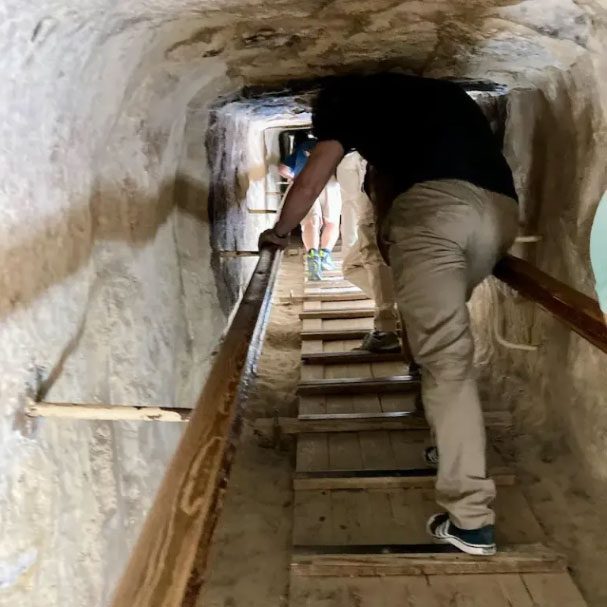
Upon entering the pyramid, visitors must first navigate a steep corridor made of enormous stones. After that, tourists must line up to climb a staircase. These steps are very steep, inclined at nearly 35 degrees. The height in this area is low, so people must generally bend down to move forward. The passage is also very narrow, accommodating only one person at a time.
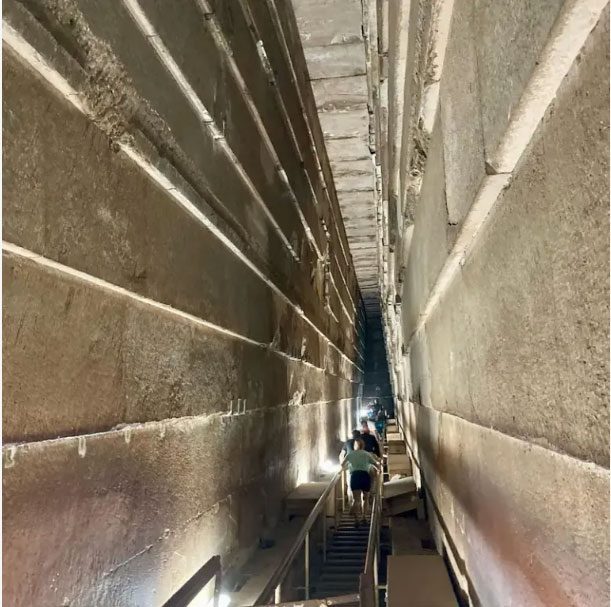
Next, tourists will ascend another staircase to reach the deeper areas of the pyramid.
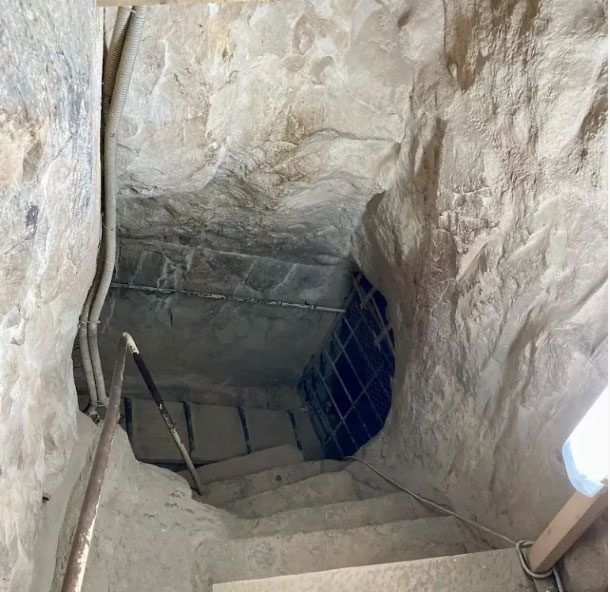
Occasionally, visitors will encounter sections of stairs with steep inclines, as shown in the photo.
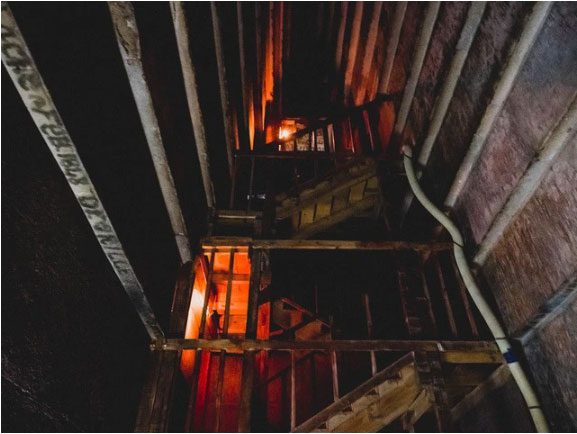
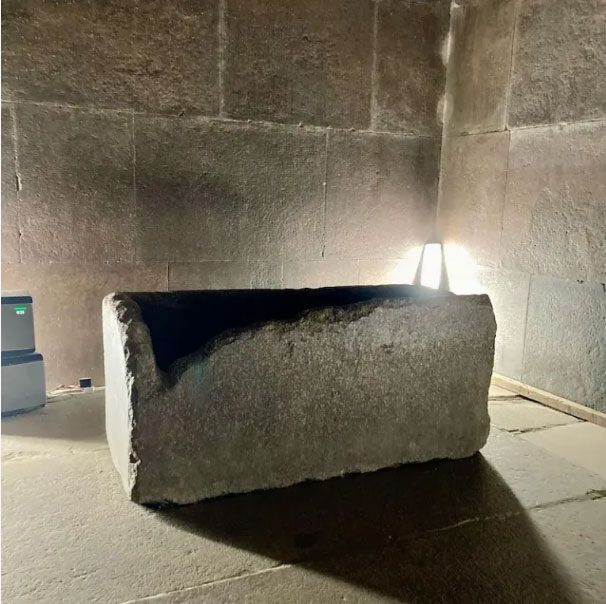
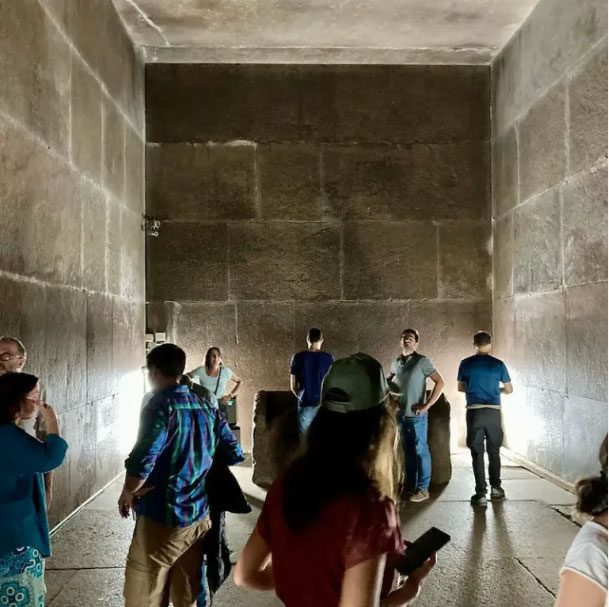
After navigating several steep staircases, the tour concludes as visitors gaze upon several secret rooms, which housed the remains of the Pharaoh and his treasures. However, scientists have removed the Pharaoh’s remains along with valuable gold and silver artifacts. Visitors can take photos inside this chamber.
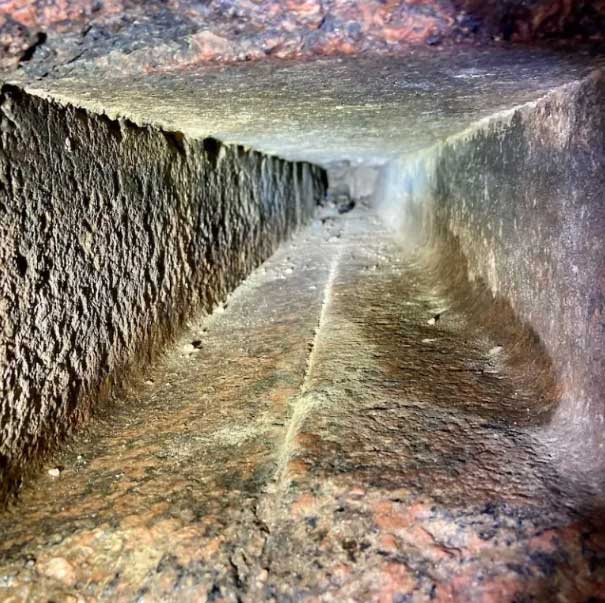
In some pyramids, especially Khufu, one can also find structures called air shafts. These ducts are designed to provide fresh air to the interior of the pyramid and connect it to the outside environment. These shafts are very narrow and may lead to rooms or areas yet to be explored.
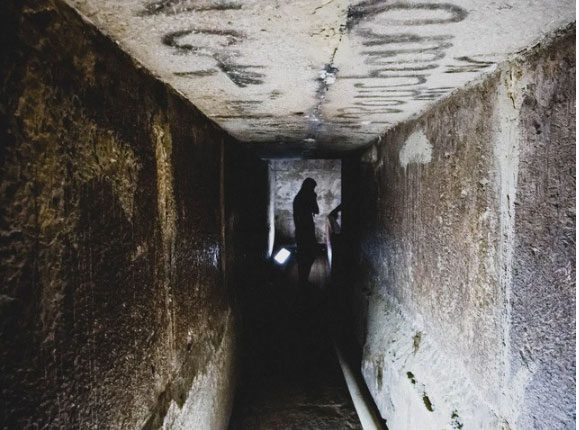
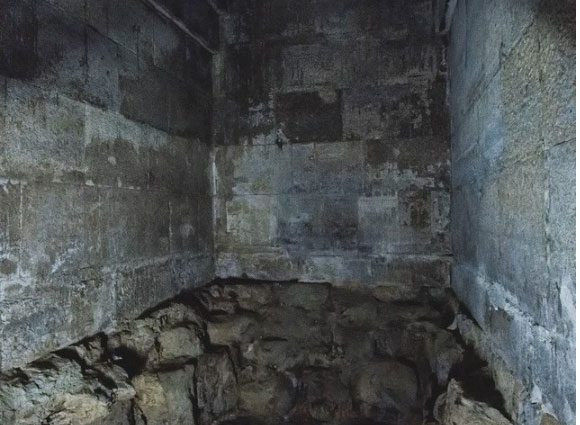
Some visitors share that their tour inside the pyramid ends quickly because there isn’t much to see. Some even summarize their trip in one sentence: Just walls of bricks, narrow passages, and people everywhere.


















































